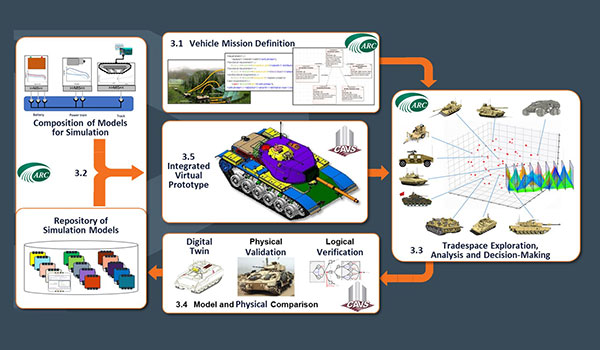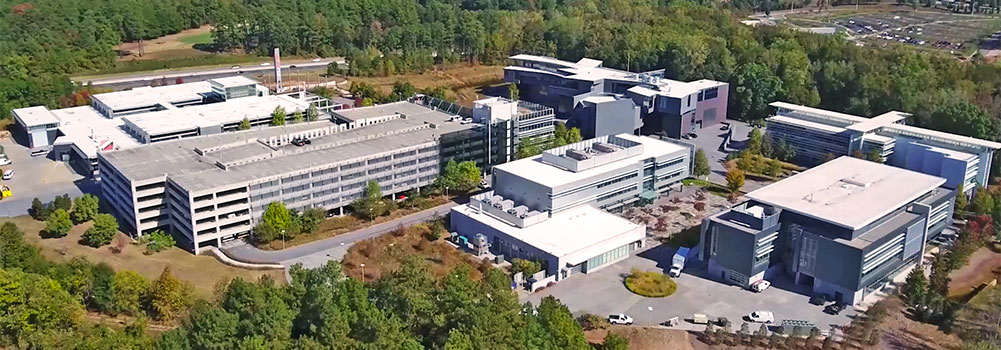VIPR-GS | Clemson University
ABOUT VIPR-GS
Virtual Prototyping of Autonomy-Enabled Ground Systems
The next-generation combat vehicle envisions pairing manned and unmanned systems with the most modern mobility, protection, and power generation capabilities to address new and emerging challenges from our adversaries. The magnitude of modernization efforts and their pace is unprecedented, and the only way to expeditiously explore a large design space and screen technologies is through Virtual Prototyping.
These Virtual Prototyping / Digital Engineering methods are the foundation that enables the exploration of vast design landscapes, computationally augmented decision making, optimization of the complex systems, screening of candidate technologies, and demonstration of advanced concepts in a gaming environment. Simultaneous consideration of design and control is considered a key enabler for rigorous system integration and analysis. Main drivers throughout the ideation phase result in breakthroughs in off-road vehicle autonomy research and vehicle power and energy, including smart management of fleet energy resources. Novel materials for structures, energy conversion, and energy storage expand the frontiers of research. Innovation in experimental techniques enables the generation of data for model development, characterization of novel component systems and designs, the demonstration of designs and algorithms, and finally, validation and verification.
VIPR-GS researchers deliver proven strengths in areas including electric drivelines, power electronics, power grid control and resilience, advanced materials and material processing, advanced manufacturing, advanced Internal Combustion Engine (ICE) concepts and hybrid propulsion, energy conversion and storage, model predictive control of complex powertrains, design and control of cyber-physical systems, cybersecurity, sensing and sensor fusion, machine learning, design of complex systems, system engineering, edge computing, and others.
develop and support
Mission & Vision
- The overarching mission of the VIPR-GS research center is to provide new modeling and simulation capabilities, digital engineering tools and methodologies, as well as hardware demonstrations supporting the Ground Vehicle Systems Center's research and development mandate driven by the needs of the Army's Next-Generation Combat Vehicle program, one of the six top priorities for the United States Military.
- Our vision is to support the U.S. Army in developing technology roadmaps and provide methods and simulation tools for designing future autonomy-enabled ground vehicles with enhanced mobility, high modularity, improved energy efficiency, and smart management of resources.
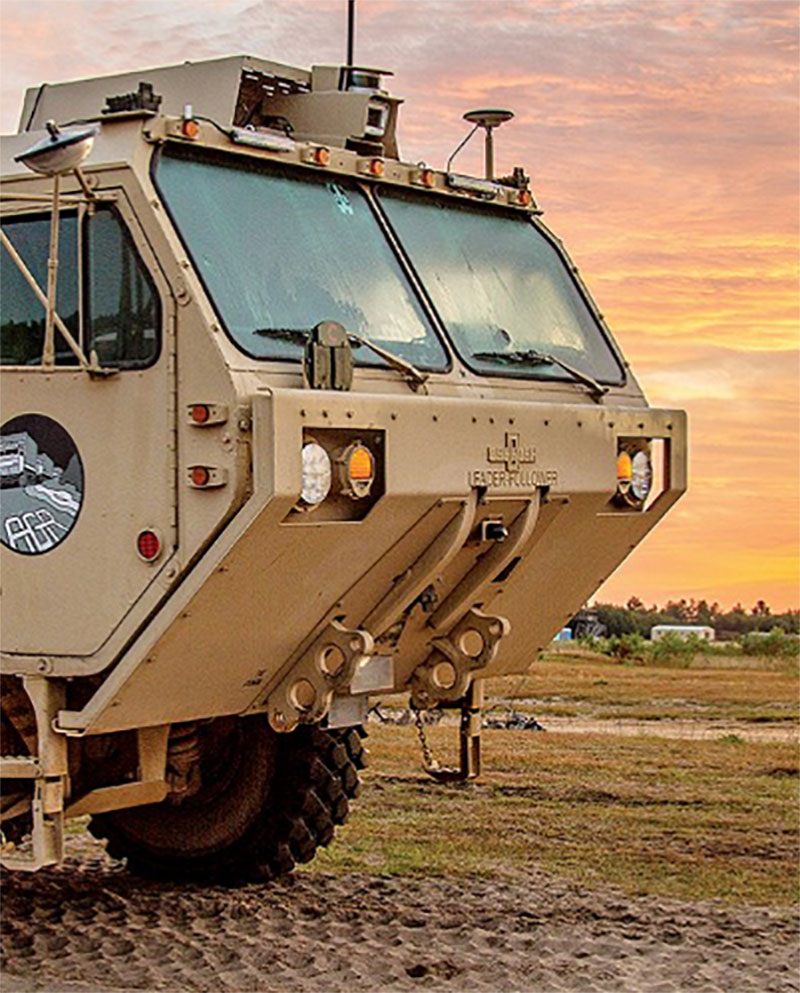
research breakthroughs
VIPR-GS Focus
VIPR-GS research efforts are organized around three themes.
Our goal is to engineer configurability, resilience, and graceful degradation in the context of systems of connected and automated vehicles (CAVs). Towards this goal, we will exploit our deep research experience with verification and validation, building upon via simulation-based design evaluation as well as hardware-in-the-loop physical testing advanced digital twins.
Focus Area 1
Off-Road Autonomy for Multi-Scale Vehicle Fleets
Autonomous ground-combat systems capitalize on enhanced scientific understanding and ongoing technological revolution to augment the mobility and maneuverability components of multi-domain operations.
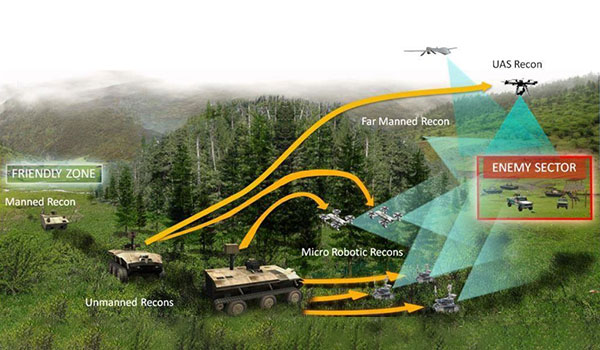
Focus Area 2
Propulsion Systems and Smart Energy
Next-generation combat vehicles are intended to be autonomous, agile and have increased lethality in the battlespace. In order to achieve these goals, the vehicle must be both energy and power-dense, highly resilient in the context of the relevant environment, reconfigurable in the context of energy routing to endure under potential damage, be energy efficient in order to function at 100% capability during a mission and be capable of harvesting energy from a variety of static or mobile sources.
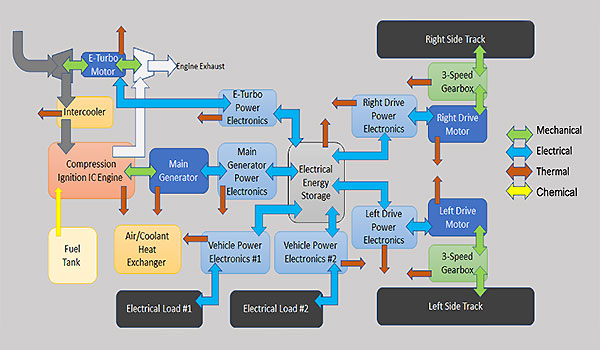
Focus Area 3
Virtual Prototyping and Digital Engineering for Autonomy-Enabled Ground Vehicles
Complex and dynamic operational contexts require the agile development and deployment of the next-generation combat vehicle. To achieve such agility without compromising reliability, robustness, or mission readiness, new methods and tools are needed to allow systems and design engineers across multiple organizations to explore novel, innovative vehicle concepts, predict their performance in different
